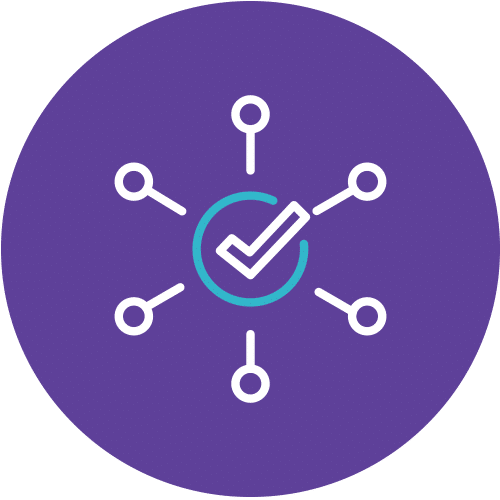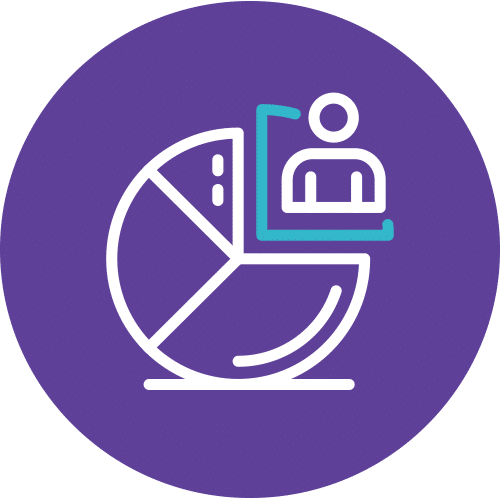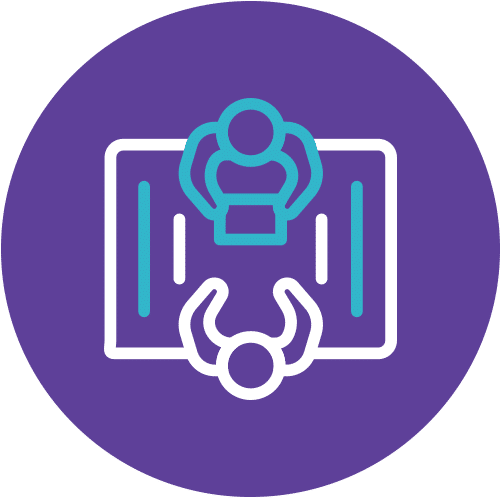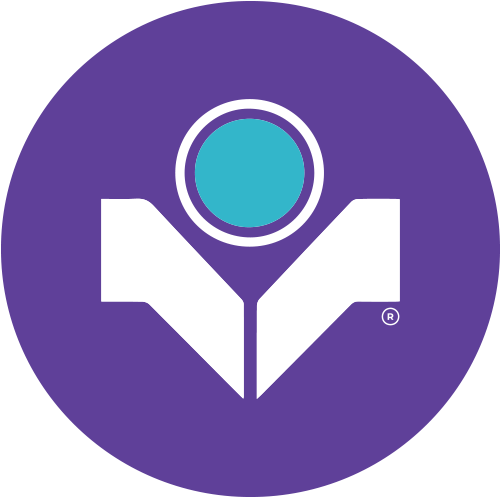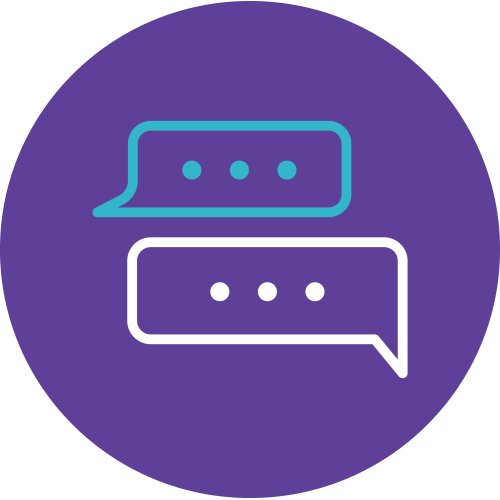Collaboration Communications Systems Engineer Training: Empowering Your Career
Are you ready to take your career to the next level with top-notch Collaboration Communication Systems Engineer training? Look no further than Info Trek’s ‘Collaboration Communication Systems Engineer training’ course! This comprehensive 4-day program is your gateway to mastering the art of managing Microsoft Teams in your organization.
Unleash Your Potential
If you’re aspiring to excel in the role of a Microsoft 365 Teams Admin or eyeing that coveted Microsoft Teams Administrator Associate certification, this course is your stepping stone. With a focus on collaboration and communication in an enterprise environment, you’ll gain insights into Teams architecture, security, and compliance features, preparing the environment for deployment, and much more.
What You'll Learn
From understanding Microsoft Teams components and security measures to deploying and managing teams, this course equips you with invaluable skills. It’s your opportunity to explore chat and collaboration experiences, manage communication, and troubleshoot effectively. By actively participating in this course, you’ll be arming yourself with knowledge that can reshape your career trajectory.
Invest in your future today with Microsoft Teams training from Info Trek. Your career success story starts here!
Course Details
Course Code:MS-721; Duration: 4 Days; Instructor Led
This training course is designed to give participants the knowledge and skills to become a Collaboration Communications Systems Engineer. Participants should understand the fundamentals of networking, telecommunications, audio/visual and meeting room technologies, identity and access management, and Microsoft Teams.
They will gain hands-on experience configuring and deploying Microsoft Teams Phone, meetings and certified devices including Microsoft Teams Rooms and Surface Hub. The course will also cover how to manage and monitor Teams Phone, meetings, and certified devices using the Microsoft Teams admin center, PowerShell, the Microsoft Teams Rooms Pro Portal, and the Call Quality Dashboard.
In addition, the course will cover configuring and deploying Microsoft Teams Phone with PSTN connectivity through Microsoft Calling Plans, Operator Connect, Teams Phone Mobile, and Direct Routing.
Audience
Collaboration Communications Systems Engineers are responsible for planning, deploying, configuring, maintaining, and troubleshooting Microsoft Teams Phone, meetings, and personal and shared space devices, including Microsoft Teams Rooms and Surface Hub.
Collaboration Communications Systems Engineers have a fundamental understanding of networking, telecommunications, audio/visual and meeting room technologies, identity and access management.
They are proficient in managing and monitoring Teams Phone, meetings, and certified devices using the Microsoft Teams admin center, PowerShell, the Microsoft Teams Rooms Pro Portal, and the Call Quality Dashboard. They deploy and configure Microsoft Teams Phone with PSTN connectivity through Microsoft Calling Plans, Operator Connect, Teams Phone Mobile, and Direct Routing.
Collaboration Communications Systems Engineers work with Teams Administrators, Microsoft Identity and Access Administrators, and Microsoft 365 Administrators. In addition, they may work with owners of other workloads, including facilities managers, network engineers, security engineers, device manufacturers, telephony providers, and Microsoft Certified solutions providers
Prerequisites
no prerequisites
Methodology
This program will be conducted with interactive lectures, PowerPoint presentation, discussions, and practical exercise.
Course Objectives
no methodology
Outlines
Module 1: Introduction to Teams meetings and calling
This module provides an overview of Microsoft Teams communication and collaboration options: Teams phones, auto attendants, call queues, meeting room devices, and different meetings types. It covers the benefits and limitations of Teams Phone, while also highlighting the importance of Teams devices in modern workplaces.
Lessons
- Introduction
- Overview of Teams meetings and events
- Overview of Teams Phone
- Overview of auto attendants and call queues
- Overview of Teams devices
- Overview of Microsoft 365 Copilot in Teams calling, meetings, and devices
- Knowledge check
- Summary and resources
After completing this module, students will be able to:
- Differentiate between different meeting and events types in Teams.
- Identify Teams Phone scenarios and PSTN options.
- Identify usage scenarios for auto attendants and call queues.
- Plan for meeting rooms and shared spaces with Microsoft Teams Rooms and other devices.
Module 2: Plan for Teams Phone
Learn about Microsoft Teams Phone and what is needed to make and receive phone calls, plan for Teams Phone devices, features, and cloud voicemail.
Lessons
- Introduction
- Plan to deploy Teams Phone
- Plan for Teams Phone PSTN connectivity
- Determine license requirements
- Plan for Teams Phone devices
- Plan and design Teams Phone features
- Plan for voicemail
- Knowledge check
- Summary and resources
After completing this module, students will be able to:
- Plan for a basic Teams Phone deployment.
- Plan for advanced Teams Phone calling options.
- Plan for Teams phones and devices
Module 3: Plan for Microsoft Teams Rooms and Surface Hub
Microsoft Teams Rooms and Surface Hubs are a great way to collaborate with your coworkers in and outside your organization. It lets you join scheduled meetings in a comfortable way without logging in into to compute unit of the room device. To get started with Microsoft Teams Rooms, you need to understand the differences and potential use cases of the different Teams Room devices, the way how these devices are technically managed, which licenses are needed and what it important for a user-friendly physical room installation.
Lessons
- Introduction
- Determine license requirements for Microsoft Teams Rooms and shared devices
- Understand differences between Microsoft Teams Rooms on Android and Windows
- Understand Microsoft Teams Rooms on Surface Hub 2S
- Understand and plan Teams Room accessories, components, and peripherals
- Understand Teams Rooms management options
- Knowledge check
- Summary and resources
After completing this module, students will be able to:
- Understand the main differences of Microsoft Teams Room for Android and Microsoft Teams Rooms for Windows
- Explain which accessories, components and peripherals are mandatory
- Understand the advantage of Surface Hub
- Understand the difference between the licensing options
- Plan and review a physical room layout
Module 4: Plan and optimize network performance for Teams media
For real-time media in Microsoft Teams, network performance is key to a good user experience. In this module, we cover Teams real-time network requirements and how to optimize your network for Teams real-time media.
Lessons
- Introduction
- Understand Teams network requirements
- Design network for media optimization
- Design and implement QoS
- Knowledge check
- Summary and resources
After completing this module, students will be able to:
- Describe Teams network requirements
- Evaluate organizational bandwidth requirements with the Teams Network planner
- Assess network using the Teams Network Assessment Tool
- Optimize network and WiFi for media flow
- Optimize media flow with QoS
Module 5: Configure and deploy Teams Phone
Before Microsoft Teams Phone users can make or receive calls and use advanced features, phone numbers must be assigned and Microsoft Calling plans or Operator Connect must be configured.
Lessons
- Introduction
- Configure emergency calling for Teams Calling Plans
- Manage and configure Microsoft PSTN numbers
- Configure Operator Connect and Teams Phone Mobile
- Configure Teams Phone policies
- Create and manage Teams policies
- Configure Audio Conferencing
- 8 min
- Knowledge check
- Summary and resources
After completing this module, students will be able to:
- Configure emergency calling addresses
- Manage Microsoft Calling Plan numbers
- Setup and manage Operator Connect and Teams Phone Mobile
- Understand Teams Phone policies and configuration options
- Configure Audio Conferencing and Communication Credits
Module 6: Configure and deploy Teams Phone with Direct Routing
In this module, you’ll learn how administrators configure Teams Phone with Direct Routing to meet user needs for telephony through a PSTN.
Lessons
- Introduction
- Design Direct Routing call flows
- Implement SIP trunking with Direct Routing
- Configure Emergency Calling for Direct Routing
- Extend Teams Direct Routing infrastructure
- Deploy and maintain a survivable branch appliance
- Knowledge check
- Summary and resources
After completing this module, students will be able to:
- Explain how to configure and connect a Session Border Controller (SBC).
- Describe the process for configuring simple and advanced voice routing.
- Describe how to provision users, implement number translation, create, and assign dial plans.
- Explain how to configure and connect a Survivable Branch Appliance (SBA).
Module 7: Extend Teams Phone with additional services
Teams Phone leverages other Microsoft services and can be extended with third-party solutions for policy-based compliance recording, contact center integration, and custom bots.
Lessons
- Introduction
- Understand how Teams interacts with additional services
- Configure compliance recording in Teams
- Configure and integrate a certified contact center in Teams
- Design and deploy voice bots in Teams
- Knowledge check
- Summary and resources
After completing this module, students will be able to:
- Describe how Teams Phone interacts with other Microsoft services.
- Configure and integrate third-party policy-based compliance recording.
- Configure and integrate third-party contact center solutions.
- Design and register Voice Bots for custom developed solutions.
Module 8: Manage meetings and events experiences
Learn about different meeting solutions in Microsoft Teams, various settings and policies for Teams meetings and live events, and configuration for Audio Conferencing.
Lessons
- Introduction
- Explore meetings and events in Microsoft Teams
- Configure meeting settings
- Create and manage meeting policies
- Configure audio conferencing
- Create and manage meeting templates and template policies
- Create and manage meetings customization policies
- Configure live events settings
- Create and manage live events policies
- Examine live events across Microsoft 365
- Knowledge check
- Summary
After completing this module, students will be able to:
- Understand meetings and events in Microsoft Teams
- Set up conference bridges
- Manage meeting policies
- Configure meeting settings
- Manage Live events policies
- Configure Live events settings
- Explain Live events in Microsoft 365
Module 9: Guided project - Create and assign Teams policies to meet business requirements in Microsoft Teams
In this module, you’ll prepare your Microsoft 365 developer tenant to be ready for the usage of Microsoft Teams Rooms. You’ll create the tenant from scratch, change security related settings, and prepare Microsoft Teams Rooms specific tasks.
Lessons
- Introduction
- Prepare
- Exercise – Create a security group
- Exercise – Create and assign a messaging policy in Teams admin center
- Exercise – Create a meeting policy and assign with PowerShell
- Knowledge check
- Summary
After completing this module, students will be able to:
- Create a security group
- Create and assign a messaging policy in the Teams admin center
- Create a meeting policy in Teams admin center and assign it with PowerShell
Module 10: Configure and manage voice users
Ongoing management is required as new employees start, or if their needs change. Learn how to manage voice user configuration, including enabling voice services and adjusting voice configuration.
Lessons
- Introduction
- Enable users for Teams Phone
- Enable users for Direct Routing with Teams Phone
- Enable additional calling features for Teams Phone
- Enable users for Teams Phone Mobile
- Knowledge check
- Summary and resources
After completing this module, students will be able to:
- Enable users for Teams Phone using Calling Plans, and Teams Phone Mobile or Operator Connect if it’s configured for your tenant.
- Enable users for Direct Routing.
- Manage per-user options for Teams Phone.
Module 11: Configure auto attendants and call queues
Understand how auto attendants and call queues in Microsoft Teams can interact with callers to ensure they’re connected your agents as quickly as possible. You’ll also learn how to set up auto attendants and call queues.
Lessons
- Introduction
- Design call flows for auto attendants and call queues
- Configure auto attendants and call queues
- Deploy a channel-based call queue
- Configure resource accounts
- Configure Microsoft 365 groups for voicemail
- Interpret call queue conference modes
- Interpret call queue routing methods
- Configure holidays for auto attendants and call queues
- Configure custom music on hold
- Knowledge check
- Summary and resources
After completing this module, students will be able to:
- Describe the differences between auto attendants and call queues.
- Design an auto attendant to gather information from callers.
- Explain how to set up auto attendants to implement your plan.
- Demonstrate how to plan call queues to manage many callers.
- Describe how to configure call queues to alert agents and route calls.
- Explain how to plan licensing for auto attendants and call queues.
Module 12: Configure, deploy, and manage Teams devices
Teams devices provide a familiar experience and are essential for a hybrid workspace. Learn how to provision and manage devices, and associated device accounts.
Lessons
- Introduction
- Manage Microsoft Teams Phones
- Manage Microsoft Teams Room Systems
- Microsoft Teams Rooms management options
- Manage Surface Hub 2S devices
- Configure Microsoft Teams SIP gateway
- Manage Microsoft Teams displays
- Remote provisioning and sign in for Teams Phones
- Update Microsoft Teams devices remotely
- Manage Microsoft Teams device tags
- Knowledge check
- Summary and resources
After completing this module, students will be able to:
- Understand scenarios for using Teams phones, Teams displays, and Microsoft Teams Rooms with voice services.
- Differentiate between the different options for deployment and management of devices.
- Deploy Teams phones and Teams displays.
- Configure Teams Phone for Microsoft Teams Rooms.
- Manage Teams devices in the Teams admin center and Teams Rooms Pro Management Portal.
Module 13: Guided project - Prepare meeting room experiences
In this module, you’ll prepare your Microsoft 365 developer tenant to be ready for the usage of Microsoft Teams Rooms. You’ll create the tenant from scratch, change security related settings, and prepare Microsoft Teams Rooms specific tasks.
Lessons
- Introduction
- Prepare
- Exercise – Create dynamic security group
- Exercise – Configure security settings
- Exercise – Create room resource accounts
- Exercise – Configure mailbox properties
- Knowledge check
- Summary
After completing this module, students will be able to:
- Prepare the Microsoft 365 tenant for Microsoft Teams Rooms deployment
- Create dynamic groups following best practice
- Disable multi-factor authentication for Microsoft Teams Rooms resource accounts
- Configure room mailbox properties
Module 14: Monitor and troubleshoot Teams collaboration communications systems
Troubleshooting is an important task that includes troubleshooting of phone number assignment, call failure and quality issues, client issues, and device issues. Call Analytics, Call Quality Dashboard, and the Teams Rooms Pro portal are also covered for monitoring, reporting, and troubleshooting.
Lessons
- Introduction
- Diagnose and troubleshoot phone number assignment
- Diagnose and troubleshoot Teams client issues
- Diagnose and troubleshoot call failure and call quality issues
- Report on and troubleshoot Teams calls with Call Quality Dashboard
- Diagnose and troubleshoot Direct Routing issues
- Troubleshoot and monitor Teams devices
- Troubleshoot Teams meetings and calling
- Troubleshoot Teams Rooms devices
- Knowledge check
- Summary and resources
After completing this module, students will be able to:
- Diagnose and troubleshoot phone number assignment
- Diagnose and troubleshoot Microsoft Teams client issues
- Diagnose and troubleshoot call failures and quality issues
- Report on and troubleshoot Teams calls with the Call Quality Dashboard (CQD)
- Diagnose and troubleshoot Direct Routing issues
- Troubleshoot and monitor Teams devices using the Teams Rooms Pro portal





